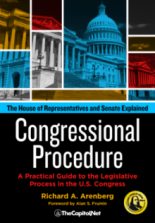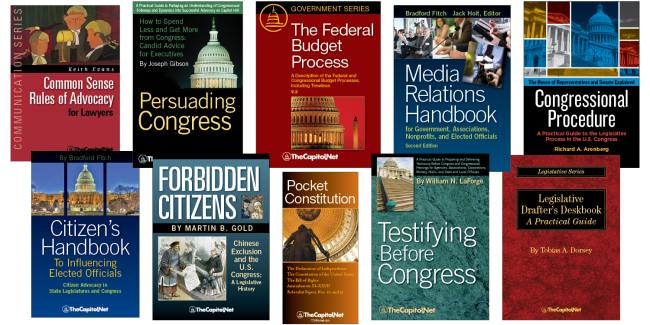116th Congress, 1st Session (2019)
CongressByTheNumbers.com
.
Also see
|
Capitol Switchboard: 202-224-3121

List of freshman class members of the 116th United States Congress – Wikipedia
|
|
||
| House | Senate | |
| Democrats | 233 | 45 |
| Independents | 1 | 2 |
| Republicans | 197 | 53 |
| Vacancies | 4 | 0 |
Sources: Office of the Clerk, U.S. House of Representatives and Wikipedia.
See also
- What’s My Congressman’s Number? – how much Members of Congress are voting to spend
- “Senate Voting Relationships,” by Renzo Lucioni
- “Social Media Adoption by Members of Congress: Trends and Congressional Considerations,” CRS Report R45337, October 9, 2018 (25-page PDF
 )
) - “Representatives and Senators: Trends in Member Characteristics Since 1945,” CRS Report R42365, January 27, 2014 (52-page PDF
 )
) - “Membership of the 116th Congress: A Profile,” CRS Report R45583, November 4, 2019 (16-page PDF
 )
) - “Membership of the 115th Congress: A Profile,” CRS Report R44762, December 20, 2018 (15-page PDF
 )
) - “Membership of the 114th Congress: A Profile,” CRS Report R43869, December 5, 2016 (14-page PDF
 )
) - “Membership of the 113th Congress: A Profile,” CRS Report R42964, November 24, 2014 (16-page PDF
 )
) - “Membership of the 112th Congress: A Profile,” CRS Report R41647, November 26, 2012 (12-page PDF
 )
) - “Membership of the 111th Congress: A Profile,” CRS Report R40086, December 27, 2010 (10-page PDF
 )
) - “Membership of the 110th Congress: A Profile,” CRS Report RS22555, September 3, 2008 (6-page PDF
 )
)
For a table showing party control of the 80th through the 112th Congresses, see the Congressional Deskbook, § 5.51.
Resumes of Congressional Activity
Resumes of Congressional Activity are available from 1947 to present. They include a numerical overview of all legislative business transacted by the Senate and House, including:
- Days in Session
- Time in Session
- Bills/Resolutions Introduced
- Public Laws Enacted
- Recorded Votes
- Vetoes
- Vetoes Overridden
- Nominations submitted to the Senate by the President for Senate confirmation
Resumes of Congressional Activity
But wait! There’s more!
- Party Divisions of the House of Representatives (1789 to Present) – from the Clerk of the House
- Party Division in the Senate, 1789-Present – from the Senate Historical Office
- Charles Stewart’s Congressional Data Page – from Charles Stewart, MIT
- 20-Year Comparison of Senate Legislative Activity – from the Senate (1-page PDF
 )
)
| House versus Committee of the Whole | |
Established by Constitution (Article I, Section 2) |
Established by House rule for consideration of a specific measure |
Mace raised |
Mace lowered |
Speaker presides |
Chair of Committee of the Whole presides (appointed by Speaker) |
One-hour rule |
Five-minute rule for amendments; special rule from Rules Committee dictates procedure, after adoption of rule by House |
Quorum of 218 |
Quorum of 100 |
One-fifth of members (44 with minimum quorum to trigger a recorded vote |
25 members to trigger a recorded vote |
Motion for previous question in order |
Motion for previous question not in order; motion to limit or end debate may be offered |
Motion to recommit in order |
Motion to recommit not in order |
Motion to reconsider in order |
Motion to reconsider not in order |
Routine business of House in order |
Routine business of House not in order |
| Differences between the House and the Senate At-a-Glance | |
|
|
|
Larger – 435 members |
Smaller – 100 members |
Districts based on population |
Two Senators from each state |
Shorter term – 2 years |
Longer term – 6 years |
All stand for election every 2 years |
6 year terms are staggered, 1/3 stand for election every 2 years – “continuing body” |
At least 25 years of age when seated |
At least 30 years of age when seated |
Originates revenue legislation |
Executive business (Treaties by 2/3, nominations) |
Four calendars (Union, House, Private, and Discharge) |
Two calendars (Legislative and Executive) |
Less procedural flexibility / more restraints |
More procedural flexibility / fewer restraints |
Rules adopted each Congress (every 2 years) |
Rules continuously in effect |
Stronger Leadership – power less evenly distributed |
Weaker Leadership – power more evenly distributed |
Role of Rules Committee and special rules to govern floor consideration |
Unanimous consent and complex unanimous consent time agreements to govern floor consideration |
Scheduling by Speaker and majority-party leadership, with limited consultation among members |
Scheduling by majority-party leadership, with broad consultation among all members |
Germaneness of amendments generally required |
Germaneness of amendments rarely required |
Presiding officer has considerable discretion in recognition; rulings rarely challenged |
Presiding officer has little discretion in recognition; rulings frequently challenged |
Debate always restricted |
Debate rarely restricted |
Debate-ending motions by majority vote (218 representatives) |
Cloture invoked by three-fifths vote (60 senators) |
Quorum calls permitted in connection with record votes |
Quorum calls permitted almost any time and used for constructive delay |
Narrower constituency – House District |
Larger constituency – entire state |
Elections generally less competitive |
Elections generally more competitive |
Specialists |
Generalists |
Less reliant on staff |
More reliant on staff |
Less media coverage |
More media coverage |
More partisan |
Less partisan |
Adjourns at end of day |
Recesses at end of most days |
Salary: 2009 – 2019: $174,000 2008: $169,300 2006 and 2007: $165,200 (2005: $162,100) For more information, see Pay and Perquisites of Members of Congress |
Salary: 2009 – 2019: $174,000 2008: $169,300 2006 and 2007: $165,200 (2005: $162,100) For more information, see Pay and Perquisites of Members of Congress |
- Source: Congressional Deskbook, § 4.10, Pay and Allowances of Members
- Executive Order 13454: “Adjustments of Certain Rates of Pay,” Federal Register, Vol. 73 No. 5, page 1486, January 8, 2008 (14-page PDF
 )
) - Executive Order 13525: “Adjustments of Certain Rates of Pay,” Federal Register, Vol. 74 No. 249, page 69231, December 23, 2009 (12-page PDF
 )
) - Executive Order 13561: “Adjustments of Certain Rates of Pay,” Federal Register, Vol. 75 No. 249, page 81817, December 29, 2010 (14-page PDF
 )
) - Executive Order 13594, signed December 19, 2011: “Adjustments of Certain Rates of Pay,” Federal Register, Vol. 76 No. 247, page 80191, December 23, 2011 (FR Doc No: 2011-33087) (13-page PDF
 )
)
House and Joint Committee Information
Committee name = official web site | W = Wikipedia
Agriculture | W
Intelligence, Permanent Select | W
Oversight & Government Reform | W
Science, Space and Technology | W
Transportation and Infrastructure | W
Joint Committees
Senate Committee Information
Committee name = official web site | W = Wikipedia
Agriculture, Nutrition, and Forestry | W
Banking, Housing, and Urban Affairs | W
Commerce, Science, and Transportation | W
Energy and Natural Resources | W
Environment and Public Works | W
Health, Education, Labor, and Pensions | W
Homeland Security & Governmental Affairs | W
Small Business and Entrepreneurship | W
For more than 40 years, TheCapitol.Net and its predecessor, Congressional Quarterly Executive Conferences, have been teaching professionals from government, military, business, and NGOs about the dynamics and operations of the legislative and executive branches and how to work with them.
Our custom on-site and online training, publications, and audio courses include congressional operations, legislative and budget process, communication and advocacy, media and public relations, testifying before Congress, research skills, legislative drafting, critical thinking and writing, and more.
TheCapitol.Net is on the GSA Schedule, MAS, for custom on-site and online training. GSA Contract GS02F0192X
TheCapitol.Net is now owned by the Sunwater Institute.
Teaching how Washington and Congress work ™


